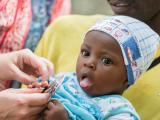The bacterium that causes a rare and severe respiratory disease linked to tropical regions has been identified for the first time in environmental samples in the United States, US health officials said yesterday.
The bacterium, Burkholderia pseudomallei, was identified through soil and water sampling in the Gulf Coast region of Mississippi, the Centers for Disease Control and Prevention (CDC) said in a news release. Direct contact with B pseudomallei causes melioidosis, a disease with nonspecific symptoms that are similar to other respiratory ailments, like pneumonia and tuberculosis.
Melioidosis is incredibly rare in the United States, with roughly 12 cases a year reported, and most cases occur in people who have travelled to regions of the world where B pseudomallei is commonly found in soil and water—including South and South East Asia, northern Australia, and parts of Central and South America, Puerto Rico, and the US Virgin Islands. A cluster of cases in 2021that sickened four people in four US states, killing two, was linked to a contaminated aromatherapy spray imported from India.
The CDC says B pseudomallei has likely been in the region since 2020 and is now considered locally endemic, and their modeling suggests the environmental conditions of the Gulf Coast states are conducive to the growth of the bacterium. But more environmental sampling is needed to determine where else it might be found in the country.
Environment is the likely source of infection
In a Health Alert Network (HAN) advisory, the CDC said the two melioidosis patients who led to the discovery—one diagnosed in July 2020, the other in May of this year—were unrelated but lived near one another in the Gulf Coast region of southern Mississippi. Neither of the patients, who were hospitalized with sepsis and recovered from their infections after receiving appropriate antibiotic therapy, had travelled outside the United States recently.
Whole genome sequencing revealed that both patients were infected by the same novel B pseudomallei strain from the Western Hemisphere. In June, investigators from the CDC and the Mississippi State Department of Health collected samples of soil, water, and plant matter from the patients' properties and nearby areas they frequented for testing. They also tested household products.
Three of the soil and water samples from the 2020 patient tested positive for B pseudomallei by polymerase chain reaction (PCR) and culture, and further genomic sequencing showed that the isolates from the patients and the environmental samples were genetically similar and distinct from previous isolates—a finding the CDC said suggests the environment was the likely source of infection.
Although the risk to the general population is considered very low, the CDC said residents of the Gulf Coast of Mississippi who have conditions that could put them at higher risk of severe melioidosis infection or death—such as diabetes, chronic kidney disease, chronic lung disease, and excessive alcohol use—should avoid contact with soil or muddy water and protect open wounds. The agency also urged healthcare providers to learn about melioidosis signs and symptoms and consider it in patients with a compatible illness who have been in the Gulf Coast region or other endemic areas and have such risk factors.
Often described as "the great mimicker" because it looks like other conditions, melioidosis symptoms can include fever, localized pain or swelling, cough, chest pain, respiratory distress, weight loss, muscle or joint pain, headache, and seizures. Melioidosis is fatal in anywhere from 10% to 50% of those infected.
"Prompt diagnosis and treatment are critical," the agency said in the HAN advisory. "Public health efforts should focus primarily on improving identification of cases so that appropriate treatment can be administered."























